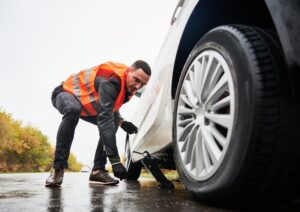Transportation is tough for historic automobile fans. You shouldn’t trust your pricey car to just anyone. However, a vintage automobile transportation company will ensure that your vehicle arrives safely.

Transporting Classic Cars?
Classic auto transport specializes in transporting antique autos that require particular care and protection. Classic car transport can move Mustangs, Corvettes, Thunderbirds, Trans Ams, and 911s.
Classic car transport options?
Moving a classic car requires open or covered transport. Let’s compare these options to help you choose:

Open
Cars are usually transported outdoors. An open-sided double-decker auto trailer transports many cars. Depending on trailer size and car type, 12 cars can be transported.
Open vehicle transit is the cheapest and most popular. Open trailers are cheap since there are many. Vintage cars may not be suitable for open transportation.
Open trailers are risky and weather-exposed. Thus, a classic car on an open trailer could be damaged by hail, road debris, theft, and dust.

Enclosed
Enclosed transport is reserved for luxury and historic cars. Enclosed transport shields the vehicle and trailer from the weather. Enclosed carriage reduces the risk of theft.
Enclosed trailers range from single-car trailers to eight-car double-deckers.
Enclosed transport costs more because you can deploy fewer automobiles. However, the safety of transporting precious historic cars may offset this cost.
Classic Car Shipping Costs?
Variables affect classic automobile shipping costs. For a precise quote, contact Carvaygo auto shipment. To prepare and get the best bargain, below are some cost details:
1. Car model
Due to trailer space, larger cars cost more to ship. Shipping a sedan costs $1,150, but a truck costs $300 more, or $1,450.
2. Transport
As mentioned, enclosed transport is more expensive than open transit since covered carriers carry fewer cars at a time.
Enclosed shipping costs 30%–40% more. Enclosed transit costs $1,500, while open costs $1,080.
3. Shipment Distance
Most auto transport companies charge by mile, so longer routes cost more. Mileage also lowers the fee per mile. You may pay $1 per mile for travel under 500 miles but $0.50 per mile for travel exceeding 2,000 miles.
4. Shipments
You can ship your historic car using many shipping companies and methods. Choose door-to-door or terminal-to-terminal service.
Terminal-to-terminal services require you to transfer your car to an auto transport facility, where a carrier will pick it up. After your excursion, return your automobile to a nearby auto transfer facility.
Door-to-door service lets you choose the driver’s pick-up and drop-off timings. Even though it’s more expensive, this shipping option is recommended for vintage vehicles because your vehicle is never left unattended at an auto transport facility before or after delivery.
5. Season Seasonal car shipping costs higher.
Car shipping charges might rise by 40% from May to September, the busiest season.
How do I ship my car?
Preparing your antique car for shipping ensures safety and efficiency. Before transferring your vintage car, do these:
- Take everything off: Remove any loose items from your car. Remove exterior embellishments like personalized spoilers to avoid damage.
- Thoroughly wash your car before loading it onto the trailer. Dings, dents, and scratches become visible.
- Vehicle check: Note your car’s dents and scuffs. Take several photos and videos of your car before delivery.
- Vehicle maintenance: Before shipping, maintain your vehicle. Test the brakes. Check for leaks.
- Exporting your car with a full tank of gas will add weight to the trailer and car. Instead, fill your gas tank 25%.
Is my car safe?
Exporting a historic car requires peace of mind. How do you protect your car?
Enclosed transportation and door-to-door delivery decrease damage.
A reliable auto transportation company protects your antique car’s worth and condition.
Find a Reliable Shipper?
Where can you ship your vintage car safely? Do this:
Your homework Check Shipping Companies First, study.
Check their Google and BBB reviews.
Check their FMCSA insurance and licenses. Check out FMCSA safety records.
Read carefully.
Read each shipper’s terms before signing. Know their duties. Ask questions and get clarifications.
Study insurance.
Finally, be sure each shipper’s insurance covers your car in an accident.
Car shipment time?
Naturally, longer car trips take longer. The average driver drives 500 miles every day, depending on traffic, weather, road conditions, etc. Based on this number, your antique car transport should take:
- Travel distances under 500 miles take two days, whereas 500–1,000 miles take four days.
- Traveling between 1,000 and 1,500 miles takes six days, between 1,500 and 2,000 miles eight days, between 2,000 and 2,500 miles ten days, and beyond 2,500 miles eleven days.
- Your car’s shipping time depends on your shipping company. Door-to-door delivery is faster than terminal-to-terminal because your driver visits you before or after picking up other vehicles.
- While shipping from terminal to terminal, your car can be in the auto transport terminal for days before being picked up by a transport carrier.
How can I guarantee my car’s arrival?
If you want Carvaygo’s fastest classic automobile delivery, choose expedited shipping. Expedited delivery can pick up your car in 24 hours.
To arrive quickly, your vehicle is loaded first on the truck. If you need a timely delivery, expedited shipping is worth the premium.
the end
Carvaygo offers the safest classic car shipping services. Carvaygo offers enclosed, open, and accelerated historic car shipping.




